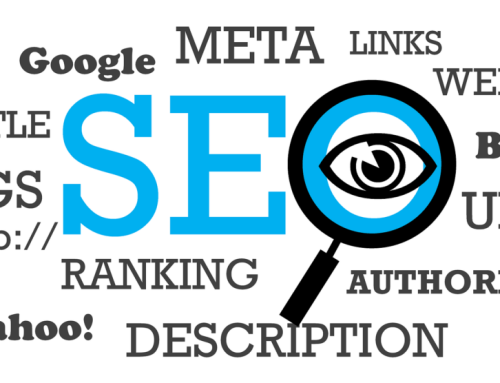 Several years before Amazon.com came into existence, eBay was the premier eCommerce platform for sellers of just about anything. Since Amazon’s rise to complete ubiquity and digital retail dominance, however, eBay has been playing second fiddle. Things have not been looking too optimistic over at the eCommerce website — earlier this year the company’s stock fell a full 13 percent after publishing its disappointing fourth quarter 2015 results. Despite recent struggles, eBay is far from throwing in the towel. At the end of June, the company announced that it would team up with one of the most powerful forces on the Web: Google.
Several years before Amazon.com came into existence, eBay was the premier eCommerce platform for sellers of just about anything. Since Amazon’s rise to complete ubiquity and digital retail dominance, however, eBay has been playing second fiddle. Things have not been looking too optimistic over at the eCommerce website — earlier this year the company’s stock fell a full 13 percent after publishing its disappointing fourth quarter 2015 results. Despite recent struggles, eBay is far from throwing in the towel. At the end of June, the company announced that it would team up with one of the most powerful forces on the Web: Google.
Through the news section of its website, eBay announced that it is “. . .working on delivering faster mobile browsing experiences leveraging the open source AMP Project.” For those who are unfamiliar, Google’s Accelerate Mobile Pages Project is a method of delivering mobile content at lightning speed and optimizing experiences for small screen devices.
eBay revealed that pages discovered and visited from Google search will enhance the speed for those item listings, and that moving forward, the company is aiming to achieve “. . .full-fledged e-commerce experience in AMP.”
That is exactly what they are doing. There are currently about eight million eBay pages leveraging AMP, and many more on the way.
One of the main reasons for eBay’s AMP adoption is mobile’s rise as the site’s fastest growing sector. This should come as no surprise considering that mobile use is growing in prominence around the world. As it stands, more than half of all Google searches across the world take place on a mobile device. Moreover, Business Insider predicts that 45 percent of eCommerce transactions will occur via mobile by 2020.
This integration with AMP technology is a wise move on eBay’s end; especially when you consider that mobile is still something of a Wild West environment, as eBay’s principal Web egineer, Senthil Padmanabhan, noted:
“Currently, when users click from a link on a mobile device, they are not sure what sort of experience they’re going to get. They may get a mobile optimized website, they might get a desktop-centric page, or they can get an ad that splashes right in the middle of the screen when not expected.”
He continued by saying, “When you build out pages with AMP you are consistently guiding users to a solid, fast user experience. Working with AMP includes leveraging best practices that ensure the best mobile Web experiences.”
Incorporating this technology into its platform sets the stage for eBay to eliminate many barriers from the current, somewhat clunky, mobile shopping experience: clicking wrong links due to undersized tabs, slow loading pages, and several other problematic format issues. Eradicating these impediments will help lead to a higher level of traffic and conversions.
As much as this assimilation will aid eBay’s efforts, it benefits Google just as much, if not more, by helping to keep more activity on the Google search engine and out of applications; an issue that the search phenom has been struggling with as of late.
While this is great news for both eBay and Google, what exactly does this alliance mean for small businesses across the Web?
AMP Tragedy?
With eBay integrating AMP into its platform, there is a good chance that more traffic will be driven to its site from places like Google. If your brand is currently selling products through eBay, then this is clearly good news. A boost in visibility can quite possibly lead to a boost in revenue. But if you are not selling merchandise on eBay, the news isn’t really that bad there either.
Google’s AMP Project is open source, which means that it is available for anyone to use. You can find the company’s HTML source code on its GitHub page for your business to leverage as well. While it may be challenging to compete with sites like eBay, your business is already competing with them, Amazon, and a myriad of others. Incorporating AMP into your platform, however, will potentially allow individuals to find your products easier, and compare prices with other outlets quickly and comfortably. If your advertised price is lower, they are more likely to shop on your site.
The same advantages that Senthil Padmanabhan mentioned for eBay can be equally gained by your company:
“The biggest benefit we get from leveraging AMP is that we improve experiences for users who come to eBay from external platforms such as Google, Twitter etc. We can give them a speed-optimized experience that gives them more context than they would otherwise have. They see relevant item listings very quickly and can make instant comparisons. Lots of users search for items in search engines, and many of them do so for price comparisons when they are in a physical store. Sometimes, when users are exploring products from a mobile device, they have a hard time getting the information they need because mobile networks can be slow. This is where AMP comes into play. It helps us to deliver a speed-optimized mobile browsing experience.”
Website performance on both desktop and mobile are critical to user experience. Integrating AMP technology with your site can only help your efforts of increasing visibility, speed, traffic, and sales. Additionally, AMP is only poised to grow as mobile use continues to skyrocket and surpass virtually every other type of device.
Adopting AMP now gives you a competitive edge over your direct rivals, and can allow you to go toe-to-toe in the price category with many larger retailers as mobile users compare their options. As Google’s Webmaster Trends Analyst, Gary Illyes, said, “. . . pay attention to AMP. It’s going to be really big.”
Original article: http://www.sitepronews.com/2016/07/25/ebay-and-google-team-up-how-it-impacts-you/





